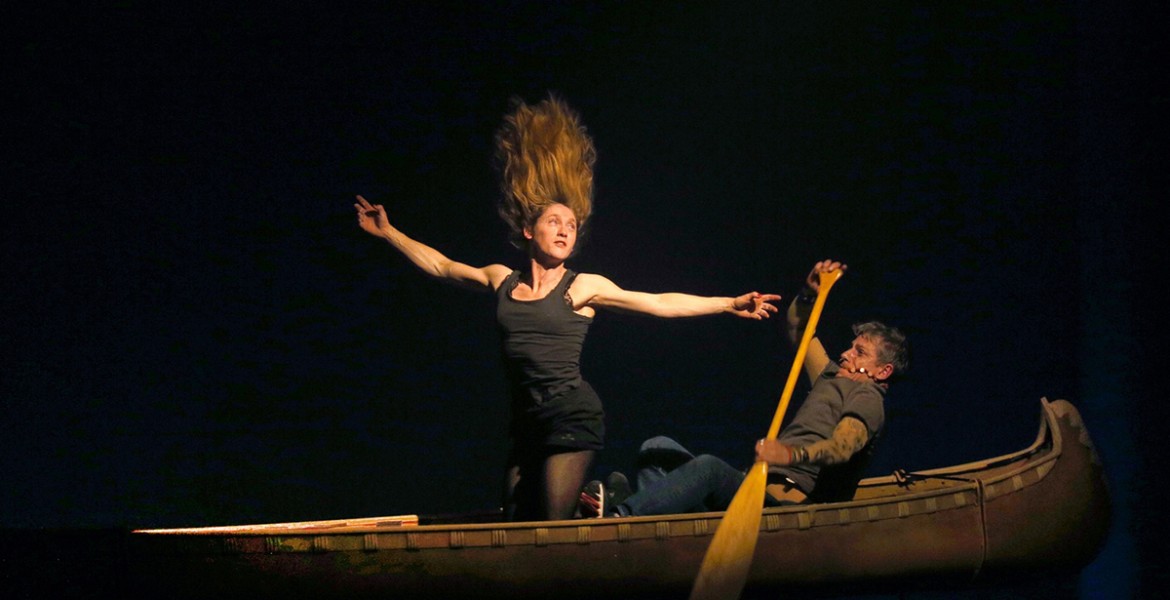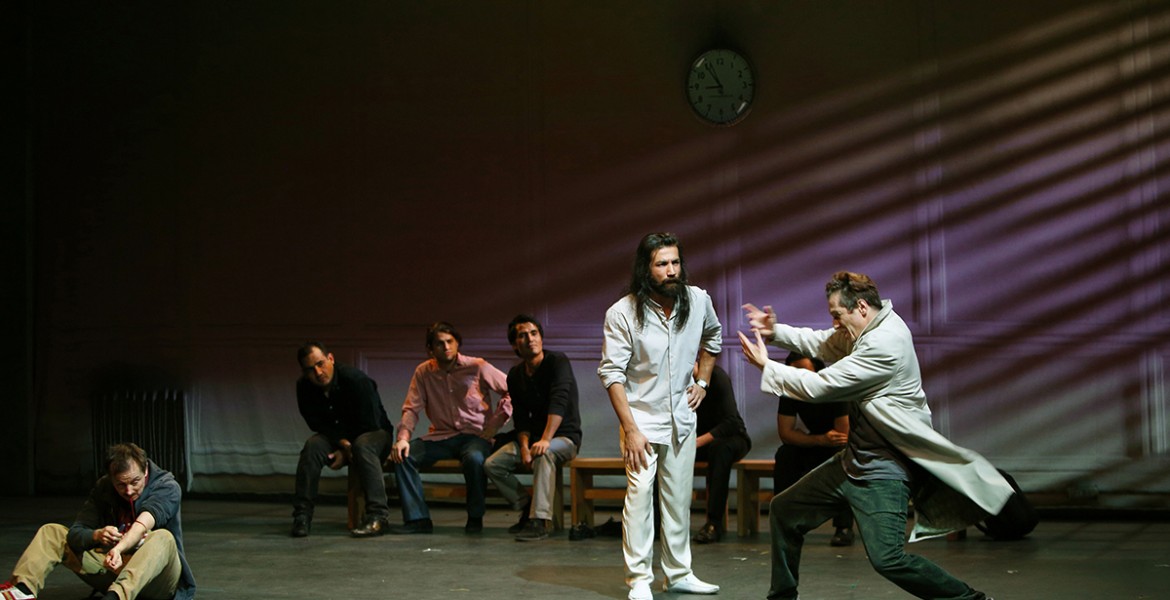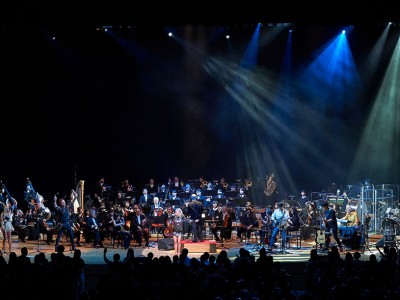Point Of View
Kanata – Επεισόδιο 1ο – Η διαμάχη – Κριτική
Νάγια ΠαπαπάνουΤι συμβαίνει στην οδό Χέηστινγκς; Πως συνδέονται μια Γαλλίδα ζωγράφος, μια νεαρή Καναδέζα που μιλά γαλλικά και φαρσί με μια γυναίκα Μοχώκ συντηρητή έργων τέχνης; Ποιος έχει το δικαίωμα να μιλά για την αορατότητα; Οι αόρατοι ή/και αυτοί που παρατηρούν την αορατότητα; Πόσες φορές μπορείς να σκοτώσεις κάποιον όταν έχει ήδη πεθάνει;
Ο Robert Lepage, σκηνοθετεί μια αμφιλεγόμενη παράσταση και την δηλώνει ως τέτοια στον τίτλο της: Kanata – Επεισόδιο Ι – Η διαμάχη. Όμως, τολμώ να πω: θα ήταν αμφιλεγόμενη αν δεν είχε ξεσηκώσει τέτοιο δημόσιο διάλογο ακόμα πριν την πρεμιέρα της; Η αναπόφευκτη αμαλγαματοποίηση των πληθυσμών σε διαφορετικές χώρες σε όλο τον κόσμο είτε λόγω της μετανάστευσης εξαιτίας συρράξεων ή / και φτώχειας, είτε ακόμα λόγω της κλιματικής αλλαγής, είναι ένα γεγονός. Ποια είναι η διαμάχη που πρέπει να απευθύνουμε και να προκαλέσουμε; Όπως είχε πει κι ο Αντρέ Μπρετόν ιδιαίτερα εύγλωττα: «.. σε κάθε ερώτημα, ο άνθρωπος είναι η απάντηση»
Στο έργο Kanata – Επεισόδιο Ι – Η διαμάχη, η πλοκή είναι απλή, όμως τα νήματα των ζητημάτων προς διερεύνηση πολλά: το θέμα ενός κατά συρροή δολοφόνου γίνεται ο καμβάς όπου πάνω του χρωματίζεται το κοινωνικό – πολιτικό πλαίσιο μιας πολυπολιτισμικής πόλης. Οι χαρακτήρες του έργου, σαν κοσμοπολίτες αντιπρόσωποι διαφορετικών μερών του πλανήτη: Ασιάτες, Αφρικανοί, Καναδοί Αυτόχθονες και Ευρωπαίοι, έχουν όλοι το ρόλο τους στην διήγηση και την ερμηνεία αυτής της παράστασης. Επιπρόσθετα, απόψεις ιστορικών γεγονότων διευρύνουν την εμπειρία του θεατή. Όπως σε κάθε αστική ιστορία, υπάρχει λίγο από όλα: φιλοδοξίες, διαχείριση ακινήτων, ναρκωτικά, έρωτας και χωρισμός, φόνος και πολιτική. Όμως η ανάγκη να ταυτοποιήσεις τον εαυτό σου μέσα στην ανωνυμία μιας μεγαλούπολης γίνεται κάτι περισσότερο από υπαρξιακή ανάγκη˙ μια ανάγκη να ανακαλύψεις εκ νέου της ρίζες και την καταγωγή σου, όπως συμβαίνει ιδιαίτερα εύστοχα στην σκηνή του Τόμπυ και της Μιραντα (όταν ο Τόμπυ εξηγεί πως κατάφερε να γίνει αυτός που είναι σήμερα και εκφράζει τον μέγιστο ρόλο που έπαιξε η καταγωγή του από τους Χιουρόν στην διαδικασία).
Τα έξυπνα και πολυμορφικά σκηνικά που μετακινεί ο ίδιος ο θίασος, δημιουργούν μια κινηματογραφική εμπειρία στην προκείμενη παράσταση. Αυτό προκαλεί το εξής ερώτημα: σε ποιο βαθμό το θέατρο γειτνιάζει της κινηματογραφικής εμπειρίας; Καθώς οι σκηνές αλλάζουν γρήγορα, και κάθε σκηνή συστήνεται σαν ένα καινούριο σκηνικό, σε μια αίσθηση εικονογράφησης ντεκουπάζ, ο θεατής βομβαρδίζεται από τον όγκο των σκηνικών που μαζί με τον φωτιστικό σχεδιασμό και τα ψηφιακά μέσα προσφέρουν συνδυαστικά μια συγκεκριμένη διάθεση. Εντούτοις, μόλις όλα μπουν στη θέση τους ο θεατής μπορεί να εντοπίσει όπου ο ίδιος προτίθεται σε αυτόν τον τεράστιο κινούμενο καμβά και να διατηρήσει τις λεπτομέρειες που θέλει, εξαιρετικό παράδειγμα αποτελούν οι σκηνές με το κορίτσι που τραγουδά πάνω στους κάδους, και το φαρμακείο καντίνα.
Συνολικά η εμπειρία από την παράσταση του Robert Lepage, Kanata – Επεισόδιο I – Η διαμάχη, είναι όμορφη και συναρπαστική στο βαθμό που θα επιλέξει κάποιος να επιδείξει ενσυναίσθηση στο θέμα της κοινωνικής αορατότητας και της πολιτισμικής σύνδεσης. Ο τρόπος που θα ειπωθεί μια ιστορία εξαρτάται από τις ιδιαίτερες δεξιότητες του αφηγητή και τις μεθόδους που θα μεταχειριστεί. Στην περίπτωση του θεάτρου, πρόκειται για το συναίσθημα που βιώνει ένας θεατής και οι εικόνες που θα κρατήσει στην σκέψη του (η πιρόγα που αιωρείται, για εμένα προσωπικά θα είναι μια ανεξάντλητη πηγή ηρεμίας και μαγείας). Για αυτό μια ιστορία ειπωμένη στο θέατρο μπορεί να προκαλέσει πολλαπλά και να ξεσηκώσει διαμάχη, γιατί απευθύνεται άμεσα στις εμπειρίες του θεατή.
Η μοίρα κάθε ιστορίας είναι να την αφηγούνται πολλοί άλλοι εκτός αυτού που την έζησε.

Kanata - Episode I - La Controverse – Review
What has been happening at Hastings Street? How are connected a French painter, a Canadian girl who speaks French and Farsi and a Mohawk woman art preservation professional? Who has the right to speak about invisibility; the invisible or/and those who notice the invisibility? How many times can you kill someone once dead?
Robert Lepage is staging a controversial production and claims it as such in the very title of the play: Kanata – Episode I – La Controverse. Nevertheless, I dare to say, would it be a controversial play if it hadn’t raised such a public dialogue even before the premiere? The inevitable amalgamation of populations in different countries around the world, due to migration and movement either due to conflicts and famine or even climate change is a fact. What is the controversy that we need to address and challenge? As Andre Breton has eloquently said: “To every question, man is the answer…”
In Kanata – Episode I – La Controverse, the plot is simple, yet the threads of the subjects in question many; a serial killer theme, becomes the canvas to highlight the socio – political context of a multicultural city. The characters of the play are “cosmo” – representatives: Asians, Africans, Canadian Autochthons, and Europeans they all play their part in the narration and performance of this staging. In addition, aspects of the historical facts aim to broaden the experience of the spectator. Like in every city story, there is a little bit of everything: ambitions, real estate, drugs, love story and break up, murder and politics. Yet the need to identify oneself in a big city of anonymity becomes more than an existential need, a need to rediscover the roots of one’s origin, as the scene between Toby and Miranda suggests in the most vivid way (when Toby explains to her how he made it to become who he is today and expresses the major factor that his Huron origin has played in the process).
The sharp and smart sets, moved in and out by the cast themselves, bring out a cinematic feeling to the particular production. And this raises a fair question: to what extent a theatre sensation might border the cinematic experience? As the acts change fast, and every scene is introduced as a new set, in an almost “decoupage” way of illustration, the spectator is bombarded by the volume of the sets and a combination of light design and new media filtered together to match the set design and produce a certain allure. Nevertheless, once everything is in place, the spectator is allowed to focus anywhere in this huge moving canvas and embrace the details he / she wishes; exceptional example of this kind is the scene of the young girl singing on top of the garbage bins, and the scene with the canteen – pharmacy.
The experience of Robert Lepage, Kanata – Episode I – La Controverse, in total is beautiful and intriguing to an extent that one will choose to empathize with the issue of social invisibility and cultural association. The way each story will be told lays with the particular skills of the narrator and the discipline(s) used. In the case of theatre, it is the feeling that one captures and the images stored in mind (the floating boat for me will be an everlasting source of tranquility and magic).Τhis is why a story told in theatre has a multiple effect and can raise controversy, because it appeals to the experiences of the spectator directly.
It is the destiny of every story to be told by many other than the one who lived it.
Artists
The actors of Théâtre du Soleil Shaghayegh Beheshti, Vincent Mangado, Sylvain Jailloux, Omid Rawendah, Ghulam Reza Rajabi, Taher Baig, Aref Bahunar, Simon Abkarian, Seear Kohi, Shafiq Kohi, Duccio Bellugi-Vannuccini, Sayed Ahmad Hashimi, Frédérique Voruz, Andrea Marchant, Judit Jancso, Jean-Sébastien Merle, Ana Dosse, Miguel Nogueira, Saboor Dilawar, Alice Milléquant, Agustin Letelier, Samir Abdul Jabbar Saed, Arman Saribekyan, Ya-Hui Liang, Nirupama Nityanandan, Camille Grandville, Marie-Jasmine Cocito, Man Waï Fok, Dominique Jambert, Sébastien Brottet-Michel, Eve Doe Bruce, Maurice Durozier
Directed by Robert Lepage, Dramaturgy Michel Nadeau, Artistic direction and design Steve Blanchet, Set design Ariane Sauvé with Benjamin Bottinelli, David Buizard, Martin Claude, Pascal Gallepe, Kaveh Kishipour, Etienne Lemasson and the assistance of Naweed Kohi, Thomas Verhaag, Clément Vernerey, Roland Zimmermann, Paintwork - Patina Elena Antsiferova, Xevi Ribas with the assistance of Sylvie Le Vessier, Lola Seiler, Mylène Meignier, Lighting design Lucie Bazzo with Geoffroy Adragna, Lila Meynard, Composer Ludovic Bonnier, Sound Yann Lemêtre, Thérèse Spirli, Image and projection design Pedro Pires, with Etienne Frayssinet, Antoine J. Chami, Vincent Sanjivy, Surtitling Suzana Thomaz, Costumes Marie-Hélène Bouvet, Nathalie Thomas, Annie Tran Hair and wigs Jean-Sébastien Merle, Prompt and speech teacher Françoise Berge, Assistant to the director Lucile Cocito, Production Théâtre du Soleil, with Festival d’Automne à Paris Co-production Fondazione Campania dei Festival (Napoli Teatro Festival Italia)
ΔΙΑΒΑΣΤΕ ΑΚΟΜΑ

Allah-Las @ Fuzz Live Music Club
Last Details. 24/10 Αθήνα, Fuzz Club και 25/10 Θεσσαλονίκη, Principal

Μέγας Ιεροεξεταστής – Δαιμονισμένοι
Από Παρασκευή 4 Οκτωβρίου 2019. Στο ρόλο του Μέγα Ιεροεξεταστή η Λυδία Κονιόρδου. Σκηνοθεσία: Κωνσταντίνος Χατζής. Στον ειδικά διαμορφωμένο Υπόγειο Χώρο...
Σχόλια χρηστών
Για να συμμετέχετε στην συζήτηση πρέπει να γίνετε μέλη. Λάβετε μέρος σε κάποια συζήτηση κάνοντας roll-over στο αρχικό σχόλιο και πατήστε το κουμπί "Απάντηση". Για να εισάγετε ένα νέο σχόλιο χρησιμοποιήστε την φόρμα στο τέλος της λίστας.









